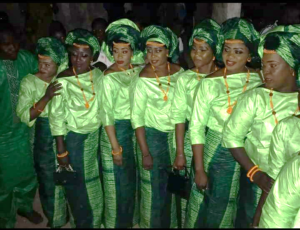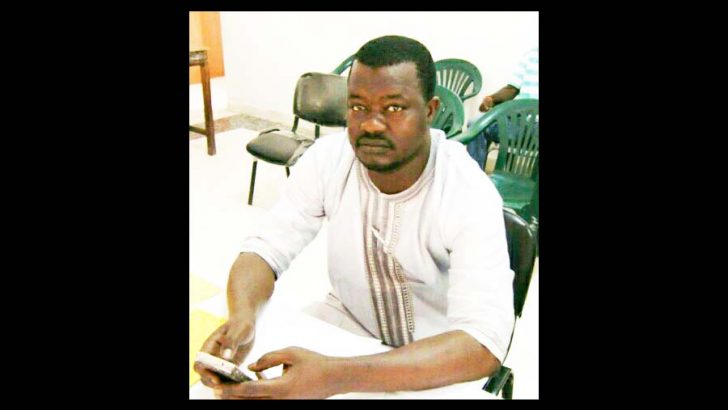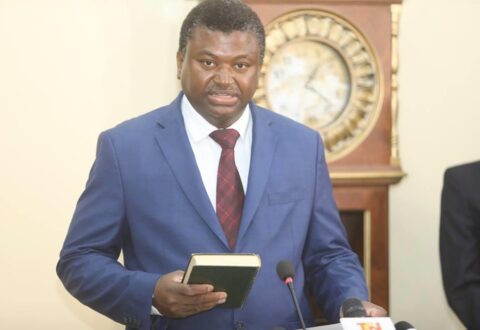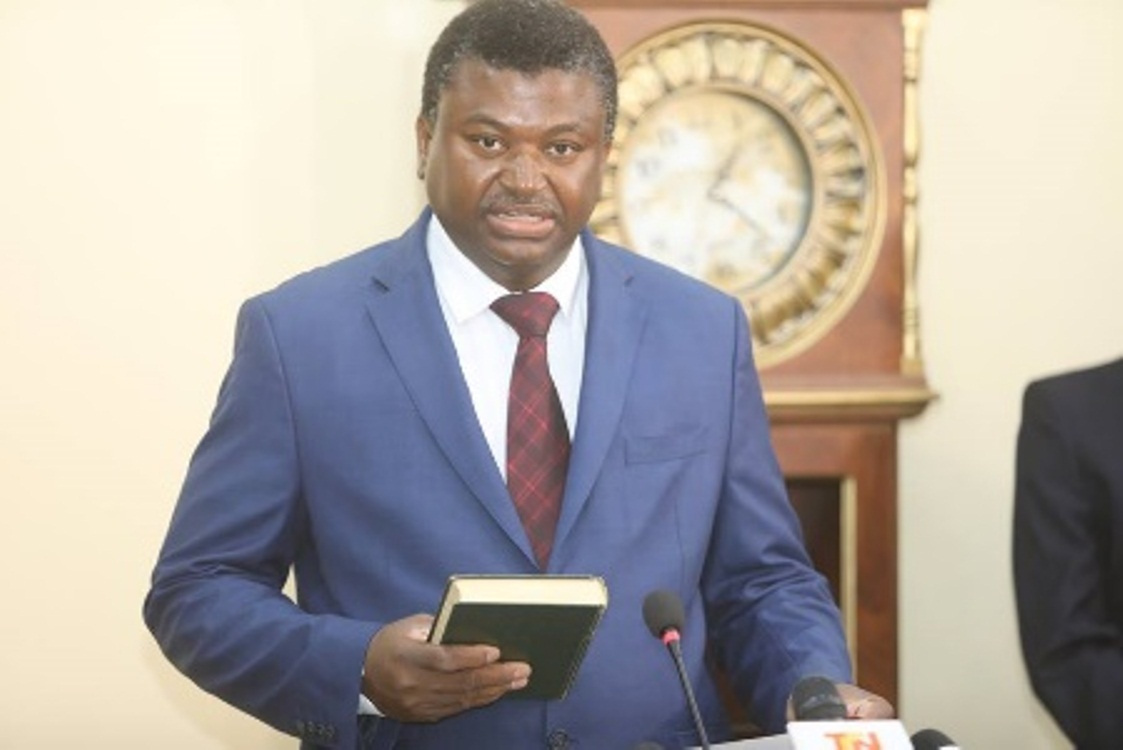By Omid Wisdom
THE COLOR DIVIDE
The Gambia, despite its size, sunny disposition and welcoming natives, has suffered a lengthy 22- year-old dictatorship at the hands of the ruthless former President Yahya Jammeh. The small coastal country – known as the smiling coast of Africa proceeds to be buffeted by scandals linked to corruption, confronted by waves of political change and put under pressure by a people rightfully refusing to go back to the undemocratic reality they once knew and survived.
In all this, colour has and continues to play a key role. Colour in this context has a lot more to do with what groups of people identify with than different hues as those on the rainbow. All around the world colours have been known to influence the way people live. From culture to politics, tribes and races. Similarly in the Gambia, from political fashion statements on the red carpet to the revolutionary inspired dress codes representing the colours on the Gambian flag, the line between fashion and political dressing continues to shape a new democratic reality, fighting against politics of tribalism dividing the country whilst allowing people the freedom of expression.
A few colours for a long time have stood out more than others. Grey, Yellow and Green.
Dark Grey
A colour chosen by the incumbent’s political party with its ideology of populism, a stance emphasizing the ideas are the people, often juxtaposing these ideas against those of the elites. These ideas of populism, globally accepted by many along class, ethnic and national lines as the shades of grey between a morally good force versus the black hole of the self-serving elites;0 which the people refuse to be sucked and trapped into. The blackhole of “politics above the interests of the people”. In the Gambia, it’s dominant figure President Adama Barrow, winner of Dec 4th’s presidential election poses as the “voice of the people”. Many young and old wear their outfits with a touch of grey or t-shirts with the president’s face, mostly to indicate their allegiance to the party as they celebrate his victory on the streets.
Those in opposition reject this notion of dark grey being the shade of grey the people need. Mostly by the buttercup yellow party promising a bright future – as in the rays of the sun – opposed to the dark ominous grey they believe is leading the country closer to some sort of blackhole or perilous end. The opposition recently erupted into post-election civil unrest in which police intervention units clashed against buttercup yellow loyal followers, as the leader of the yellow party called for peace yet seeks to contest the election results in the courts
.
(Above -The Gambian president and his two wives wearing their dark grey colours during the Dec political rally /Below – Supporters of the incumbent wearing their grey colours) Photo credits: Alhagie Manka of State of Mic|Source @Alhagie Manka Facebook
Buttercup Yellow
Reminiscent of the dominant colour in fleets of local taxis seen daily in the streets of the Gambia, butter cup yellow was co-opted by a party called UDP – the ‘leading’ opposition party to the dark grey party. It is a colour used to great effect, flooding the streets with the sunny colour at every opportunity in the name of social liberalism, constitutionalism and social democracy. Its dominant figure is Lawyer Ousainou Darboe. He is held by his followers as – the light the country needs – to bring about a change where the common good is harmonious with the freedom of the individual. Its ideas address poverty, welfare, infrastructure, health care, renewable energy and education using government intervention whilst emphasizing the rights and autonomy of the individual.
A colour the opposition often associate with a symbol of tribalism in favour of the Mandinka tribe bearing the majority of its supporters. Designers in the apolitical network sidestep it in great measures – forced to ignore how beautifully it “popped” on people of colour. Not trusting the sea of yellow t-shirts to deliver their promise of a bright sunny Gambia and to maintain the peace and tranquility the Gambia is known for. A peace that invites tourists and foreign nationals to explore the length and breadth of the Gambia, all while – enjoying the heat from its butter cup yellow sun – that shines bright all year round.


(Left- Supporters of UDP seen in their yellow in large numbers /Right – Supporters of the most popular opposition wearing their yellow colours)
Photo Credit: Alhagie Manka – State of Mic|Source @AlhagieManka (Facebook)
Savannah Green
Reserved for tourist taxis in which many Europeans who love to tour the length and breadth of one of the sunniest countries along the west African coast, the colour present on the national flag symbolizes the prosperity derived from the flora of the land. After 22 years of it being the ruling colour in the state of affairs, green has become a colour resented by many for what it represented for so long-tyranny and dictatorship. A colour that often brings back echoes of the fear and uncertainty that Jammeh’s exit brought back in 2016.
Many more colors by newly formed political parties sprung up, such as violet and white, each with their messiah complexes and symbolism that continued to divide more than unify as the Gambia geared towards the Dec 4th elections.
(Left/Right – APRC supporters in green)
(Credit – APRC Official| Source @APRCOFFICIAL Facebook)
Photo credits:
BRIDGING THE DIVIDE
Though we could say colours divide our country during elections, the resistance and resilience of fashion creatives such as Fashion Weekend Gambia have used the same tool to bring us together developing and supporting brands via sustainable means. Their annual events highlight Aada & Chosaan (Culture and Tradition), mixing and matching all colours and people together, reminding Gambians that country always comes before tribe. The designers dress the artists, some choosing to play town crier to the incumbents, an understandable quick win and throw back from Jammeh’s era where he would throw inordinate amounts of tax payers’ money at artists that celebrated his dubious legacy and colour. “Woke” artists and designers continue to side step these. Promoters pushing for change Invite these artistes to their events, the likes of as Mme Diarra’s promotion whose “One Gambia Concert” was endorsed by various political leaders who support its message of promoting peace.
Designers and artists build on an existing network, the story tellers who via their respective “wax” and a knowledge of corporate and international pandering on bootstrapping PR would not be dictated to follow ideas where colors represent political lines blindly. Using an already developed story – “Mbolloh Moi Doleh” is oft repeated – There is Power in Unity. This “mbolloh”, this “unity” is redefining color misrepresentations where shades of greys fail to clearly define the thin line between black and white, right and wrong, corruption vs the interest of the people. This “unity” speaks and showcases against colors known to promote negative tribal sentiments. This ” unity” chooses to stay vigilant and keep government accountable. So as to never return to a mindset of the green that had represented tyranny and the rule of force for so long and to help steer this ship amidst post-election civil unrest and reverberations of a pandemic.

(Top: photo Credit: @fashionweekendgambia (Facebook page) – Shine Gambia runway collection @FwG2018
Bottom: Fashion Weekend Gambian model “Bintou Ndure” featured in the colours of the Gambian flag Credit – Spanka Fotografie] ) Source: Facebook page @bintoundure
COUNTRY BEFORE TRIBE
‘The Gambia is my tribe’, a powerful line used and repeated across social media platform which serves as a quick reminder to Gambian that country comes before tribe and that there is power in unity. Also important to note is the shifting mood from demanding handouts, ignoring failed promises, ill planned ventures, and most importantly to~wards dialogue, answers to questions and not stupefied silence. The youths of the Gambia wish to be recognised, not bought, to be heard not placated. The combination gives them as youths, the best chances of success.
Encouragingly enough, most Gambians demand the post-election debates be taken from the streets and to the courts; to observe due process as three opposition parties join ranks, too late many say, to form a new coalition, bizarrely intent on contesting the election results. The international community watches. Investors and tourists hopeful that political maturity will prevail, as the country limps back from the ravages of the pandemic.

Source and photo credits: @alaghiemanka|State Of Mic
AMIDST A PANDEMIC
The creative community has also suffered the ravages of Covid. Many of the top platforms in the country time themselves to capitalize on tourism; one of Gambia’s strengths. A community driven primarily by youths and the exploitation of the creative sector as well as incoming diasporic who crave a taste of home.
Businesses, need to be more robust. The new norm takes no prisoners. A clear message was sent and every effort was made to send it to the incumbent leaders. The need for consistency versus an intrinsic responsibility for so many of Gambia’s creatives. It was simple to technically circumvent the very arbitrary Covid rules in place at the time, but managements were divided. In the case of Fashion Weekend, Soma Njie and Adi Conteh, two of the founders feared for general safety, and their civil responsibility to protect the creative industry from an unknown element – Covid. Neither was certain of the veracity of news about covid vaccines but both understood the dangers. Annie Oshin and Lena Nian – staunch anti vaxxers, and anti-maskers wanted to protect civil freedoms to choose. Despite the two vastly contrasting and massively understandable viewpoints Fashion Weekend Gambia was cancelled. The decision was made that safety was paramount, and although hugely regretful for the woefully missed opportunity to try virtual entertainment. Exciting as it was the audience wasn’t ready. The team acknowledged the gap in Gambia’s failing tourism industry as something that could seriously affect the creative industry as a whole.
As fortunate as Gambia has been with low death rates, vaccine uptake came late and the elderly were the primary victims. Nonetheless the tourism industry was decimated and yet hope is not lost in the fight to bridge the very long gap that has left the people feeling off balance.
THE BRIDGE IS LONG
The Gambia, despite its small size, sunny disposition and welcoming natives is on a long journey across not so sunny days and sometimes not so welcoming faces. The smiling coast refuses to create another dictator and encourage another rule of tyranny in the making. A journey towards a democratic reality the divide of political colours impedes. Politicians such as Halifah Sallah, one of the most well versed and respected politicians in the Gambia, whose apolitical observations towards the negative use of something such as beautiful as colors, has engaged him before many on such a journey. Bringing many like minded “thinkers” like himself on this journey to bridge the gap of the colour divide, to refuse the echoes of tyranny spilling into the present, always putting country before tribe but often not seeing the light at the end of the tunnel. No butter cup yellow rays of the sun leading to vast savanna green lands full of promise. Just uncertainty for tomorrow as the one which the global pandemic has brought upon many. Creatives and businesses, communities and individuals, just like pilgrims on a spiritual journey seeking divine intervention, a bridge between God and man; seek a better Gambia. Creatives being the most outspoken of the lot, continue to think out loud where and when others are quite, encourage others to keep moving when others are tired, build networks where the bridge seems impossible to crops

To find out more about Fashion Weekend Gambia visit their website: www.FashionWeekendGambia.gm @fashionweekendgambia (Instagram & Facebook)
Passionate about human rights, Omid Wisdom is an artist, singer, songwriter, actor, producer, voiceover artist, TV/radio personality and a freelance writer. Find Omid Wisdom on social media @iamomidwisdom – www.instagram.com/iamomidwisdom





